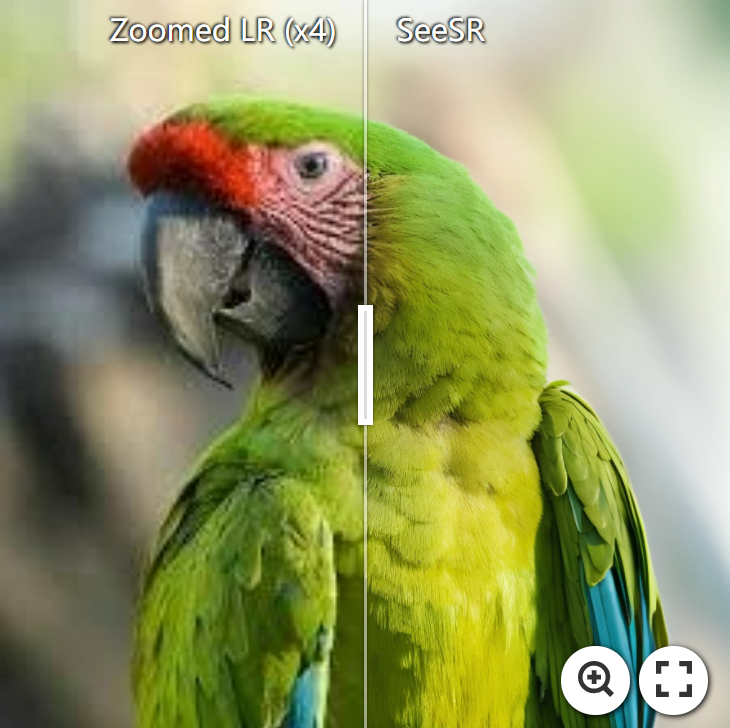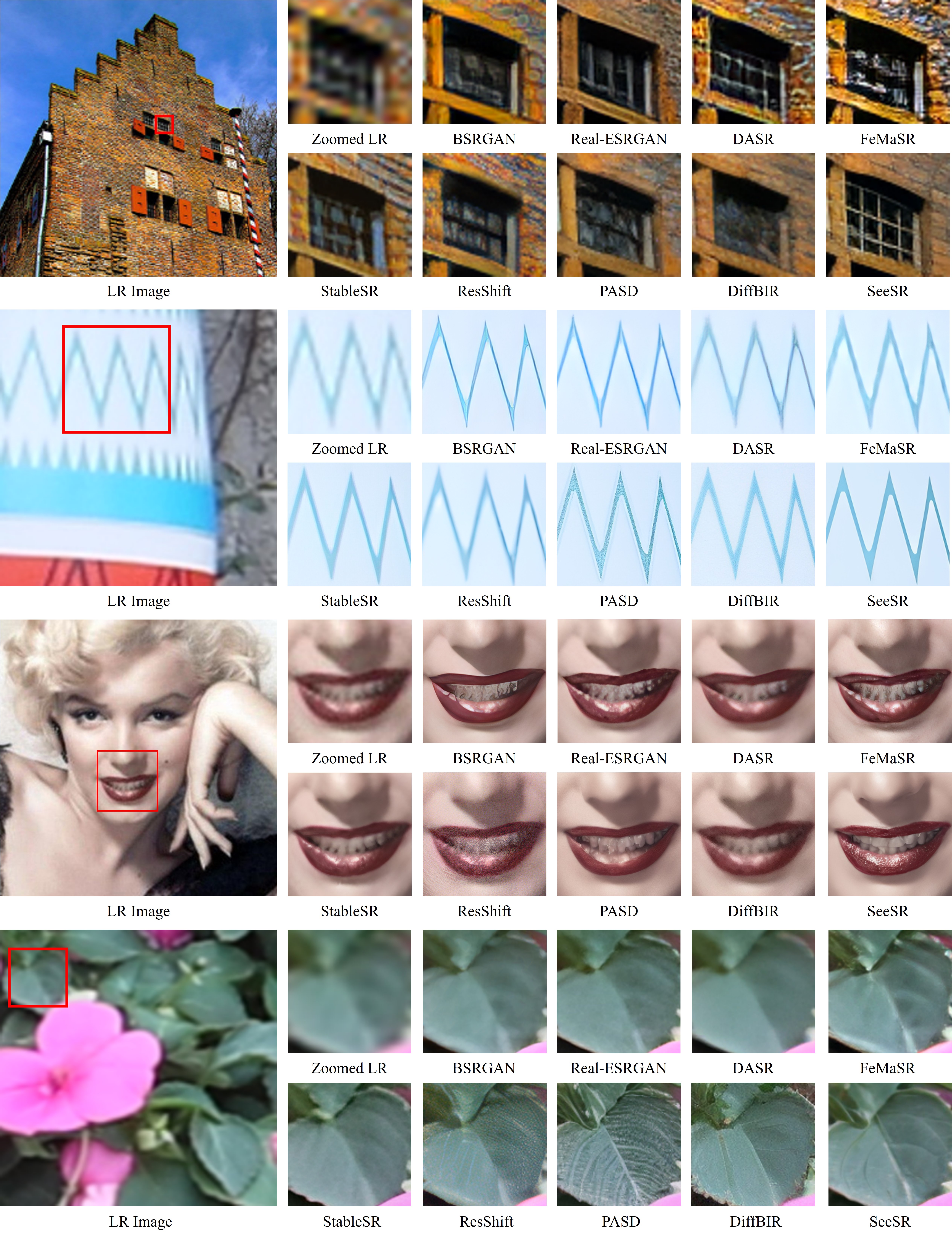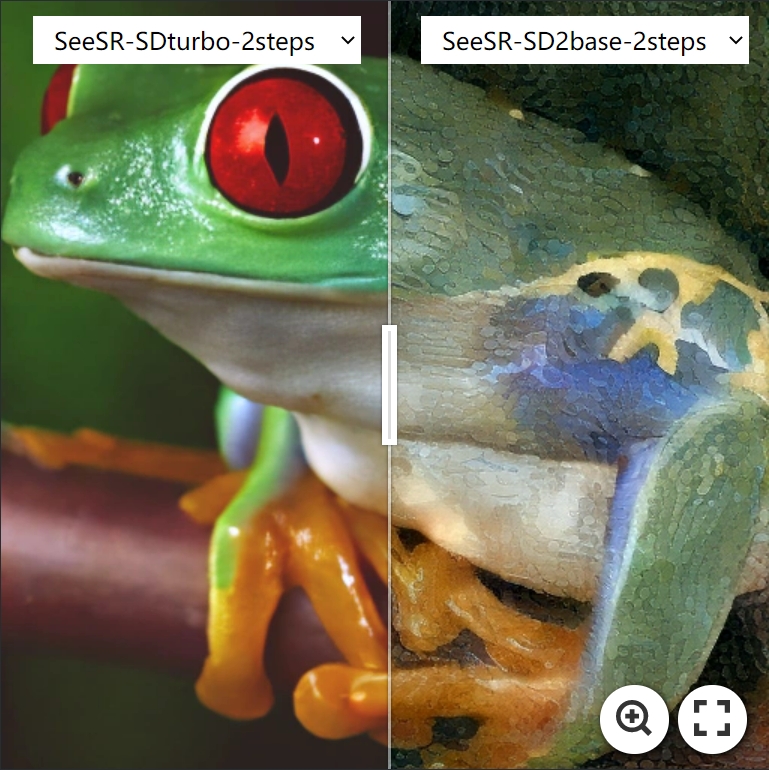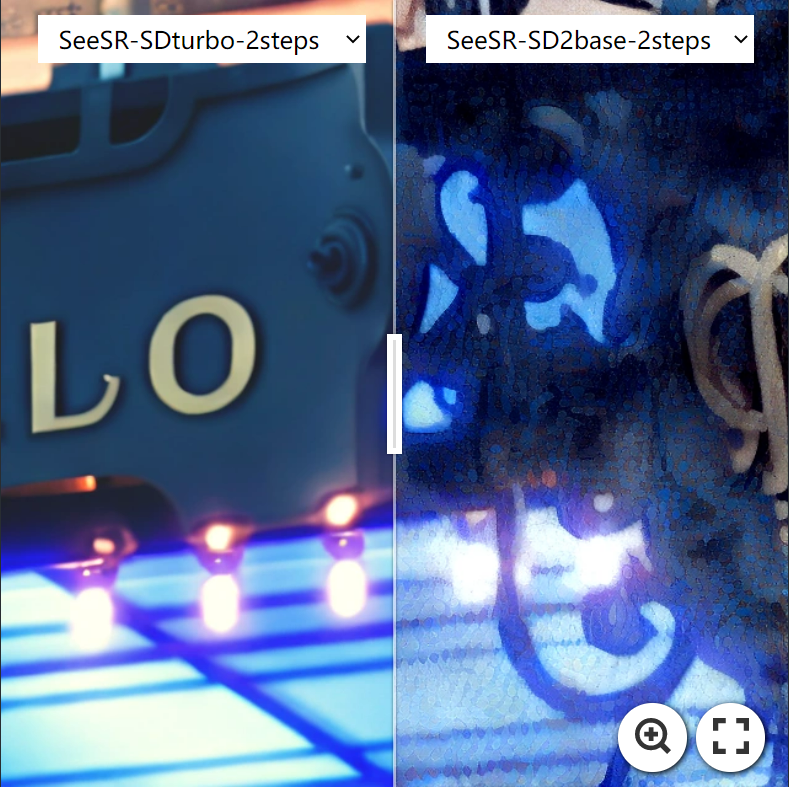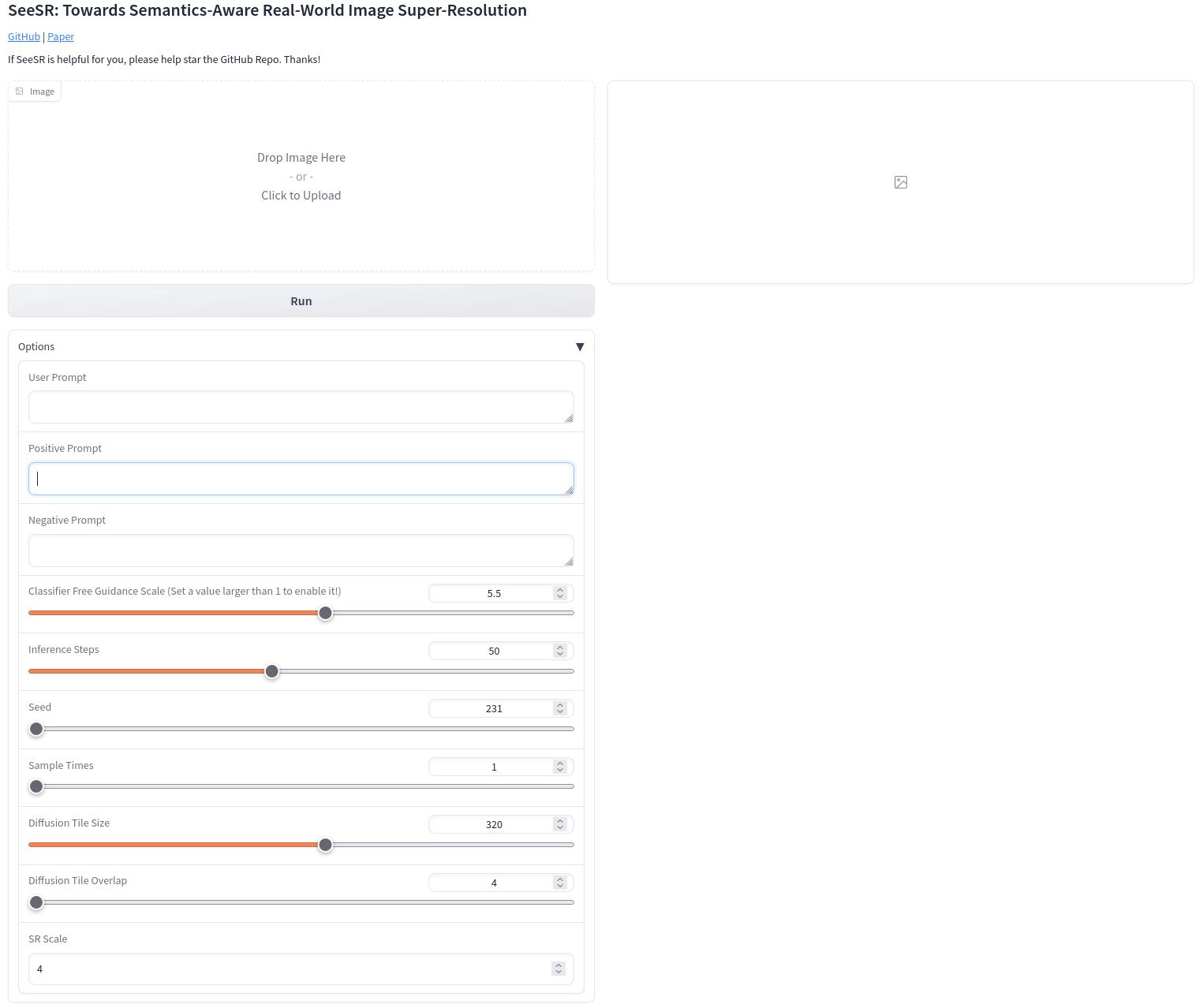Rongyuan Wu1,2 | Tao Yang3 | Lingchen Sun1,2 | Zhengqiang Zhang1,2 | Shuai Li1,2 | Lei Zhang1,2
1The Hong Kong Polytechnic University, 2OPPO Research Institute, 3ByteDance Inc.
⭐ If SeeSR is helpful to your images or projects, please help star this repo. Thanks! 🤗
- 2024.06 Our One-Step Real-ISR work OSEDiff, which achieves SeeSR-level quality but is over 10 times faster.
- 2024.03.10 Support sd-turbo, SeeSR can get a not bad image with only 2 steps ⚡️. Please refer to it.
- 2024.01.12 🔥🔥🔥 Integrated to
Try out Replicate online demo ❤️ Thanks lucataco for the implementation.
- 2024.01.09 🚀 Add Gradio demo, including turbo mode.
- 2023.12.25 🎅🎄🎅🎄 Merry Christmas!!!
- 🍺 Release SeeSR-SD2-Base, including the codes and pretrained models.
- 📏 We also release
RealLR200. It includes 200 real-world low-resolution images.
- 2023.11.28 Create this repo.
- SeeSR-SDXL
- SeeSR-SD2-Base-face,text
-
SeeSR Acceleration
## git clone this repository
git clone https://github.com/cswry/SeeSR.git
cd SeeSR
# create an environment with python >= 3.8
conda create -n seesr python=3.8
conda activate seesr
pip install -r requirements.txt
- Download the pretrained SD-2-base models from HuggingFace.
- Download the SeeSR and DAPE models from GoogleDrive or OneDrive.
You can put the models into preset/models.
You can put the testing images in the preset/datasets/test_datasets.
python test_seesr.py \
--pretrained_model_path preset/models/stable-diffusion-2-base \
--prompt '' \
--seesr_model_path preset/models/seesr \
--ram_ft_path preset/models/DAPE.pth \
--image_path preset/datasets/test_datasets \
--output_dir preset/datasets/output \
--start_point lr \
--num_inference_steps 50 \
--guidance_scale 5.5 \
--process_size 512
More details are here
Just download the weights from sd-turbo, and put them into preset/models. Then, you can run the command. More comparisons can be found here. Note that the guidance_scale is fixed to 1.0 in turbo mode.
python test_seesr_turbo.py \
--pretrained_model_path preset/models/sd-turbo \
--prompt '' \
--seesr_model_path preset/models/seesr \
--ram_ft_path preset/models/DAPE.pth \
--image_path preset/datasets/test_datasets \
--output_dir preset/datasets/output \
--start_point lr \
--num_inference_steps 2 \
--guidance_scale 1.0 \
--process_size 512
Please read the arguments in test_seesr.py carefully. We adopt the tiled vae method proposed by multidiffusion-upscaler-for-automatic1111 to save GPU memory.
Please put the all pretrained models at preset/models, and then run the following command to interact with the gradio website.
python gradio_seesr.py
We also provide gradio with sd-turbo, have fun. 🤗
python gradio_seesr_turbo.py
We release our RealLR200 at GoogleDrive and OneDrive. You can download RealSR and DRealSR from StableSR. We also provide the copy of that at GoogleDrive and OneDrive. As for the synthetic test set, you can obtain it through the synthetic methods described below.
Download the pretrained SD-2-base models and RAM. You can put them into preset/models.
We pre-prepare training data pairs for the training process, which would take up some memory space but save training time. We train the DAPE with COCO and train the SeeSR with LSDIR+FFHQ10k.
For making paired data when training DAPE, you can run:
python utils_data/make_paired_data_DAPE.py \
--gt_path PATH_1 PATH_2 ... \
--save_dir preset/datasets/train_datasets/training_for_dape \
--epoch 1
For making paired data when training SeeSR, you can run:
python utils_data/make_paired_data.py \
--gt_path PATH_1 PATH_2 ... \
--save_dir preset/datasets/train_datasets/training_for_dape \
--epoch 1
--gt_paththe path of gt images. If you have multi gt dirs, you can set it asPATH1 PATH2 PATH3 ...--save_dirthe path of paired images--epochthe number of epoch you want to make
The difference between make_paired_data_DAPE.py and make_paired_data.py lies in that make_paired_data_DAPE.py resizes the entire image to a resolution of 512, while make_paired_data.py randomly crops a sub-image with a resolution of 512.
Once the degraded data pairs are created, you can base them to generate tag data by running utils_data/make_tags.py.
The data folder should be like this:
your_training_datasets/
└── gt
└── 0000001.png # GT images, (512, 512, 3)
└── ...
└── lr
└── 0000001.png # LR images, (512, 512, 3)
└── ...
└── tag
└── 0000001.txt # tag prompts
└── ...
Please specify the DAPE training data path at line 13 of basicsr/options/dape.yaml, then run the training command:
python basicsr/train.py -opt basicsr/options/dape.yaml
You can modify the parameters in dape.yaml to adapt to your specific situation, such as the number of GPUs, batch size, optimizer selection, etc. For more details, please refer to the settings in Basicsr.
CUDA_VISIBLE_DEVICES="0,1,2,3,4,5,6,7," accelerate launch train_seesr.py \
--pretrained_model_name_or_path="preset/models/stable-diffusion-2-base" \
--output_dir="./experience/seesr" \
--root_folders 'preset/datasets/training_datasets' \
--ram_ft_path 'preset/models/DAPE.pth' \
--enable_xformers_memory_efficient_attention \
--mixed_precision="fp16" \
--resolution=512 \
--learning_rate=5e-5 \
--train_batch_size=2 \
--gradient_accumulation_steps=2 \
--null_text_ratio=0.5
--dataloader_num_workers=0 \
--checkpointing_steps=10000
--pretrained_model_name_or_paththe path of pretrained SD model from Step 1--root_foldersthe path of your training datasets from Step 2--ram_ft_paththe path of your DAPE model from Step 3
The overall batch size is determined by num of CUDA_VISIBLE_DEVICES, --train_batch_size, and --gradient_accumulation_steps collectively. If your GPU memory is limited, you can consider reducing --train_batch_size while increasing --gradient_accumulation_steps.
This project is based on diffusers and BasicSR. Some codes are brought from PASD and RAM. Thanks for their awesome works. We also pay tribute to the pioneering work of StableSR.
If you have any questions, please feel free to contact: rong-yuan.wu@connect.polyu.hk
If our code helps your research or work, please consider citing our paper. The following are BibTeX references:
@inproceedings{wu2024seesr,
title={Seesr: Towards semantics-aware real-world image super-resolution},
author={Wu, Rongyuan and Yang, Tao and Sun, Lingchen and Zhang, Zhengqiang and Li, Shuai and Zhang, Lei},
booktitle={Proceedings of the IEEE/CVF conference on computer vision and pattern recognition},
pages={25456--25467},
year={2024}
}
This project and related weights are released under the Apache 2.0 license.






